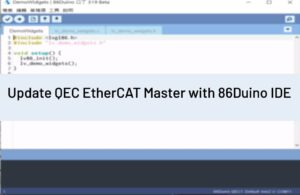[AIServo86]
描述
Assign the list of target positions representing the Frame to each servo and immediately control the servo to move to the angle specified by the Frame.
語法
aiservoframerobotis.playPositions()
aiservoframerobotis.playPositions(servo1)
aiservoframerobotis.playPositions(servo1, servo2)
aiservoframerobotis.playPositions(servo1, servo2, ... , servo64)
aiservoframerobotis.playPositions(time)
aiservoframerobotis.playPositions(time, servo1)
aiservoframerobotis.playPositions(time, servo1, servo2)
aiservoframerobotis.playPositions(time, servo1, servo2, ... , servo64)
參數
aiservoframerobotis: Variable of AIServoFrameRobotis type.servo1 ~ servo64: The variables of AIServo type.time(optional): If no setting value is entered or the setting value is 0, it means the servo will rotate at full speed.
回傳
無
範例
#include <AIServo86.h>
AIServoPort(ROBOTIS, AX12) bus;
AIServo myservo0;
AIServo myservo1;
AIServo myservo2;
AIServoFrameRobotis myframe; // Declare an AIServoFrameRobotis object
void setup()
{
bus.begin(Serial1, 1000000);
myservo0. attach(bus, 9);
myservo1. attach(bus, 11);
myservo2. attach(bus, 5);
myframe.positions[0] = 180; // set Frame content
myframe. positions[1] = 130;
myframe. positions[2] = 200;
// Rotate the servo to the position specified by Frame in 500ms (myservo0 rotates to position[0]
// position, myservo1 rotates to position[1], myservo2 rotates to position[2])
myframe.playPositions(500, myservo0, myservo1, myservo2);
}
void loop() {}參考
- positions[]
- setPostions()
- save()
- load()
函式庫參考主頁面
86Duino 參考的文本是根據 Creative Commons Attribution-ShareAlike 3.0 License,部分文本是從 the Arduino reference 修改的。 參考中的代碼示例已發佈到公共領域。



